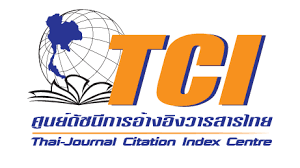Biflavonoids from Root Barks of Garcinia cowa with Radical Scavenging Activity
Keywords:
Garcinia cowa, Biflavonoids, AntioxidationAbstract
Plants of the Clusiaceae family have received considerable attention due to their availability of interesting secondary metabolites. We have previously collected a number of phytochemicals from the Garcinia species. In continuation of the search for new bioactive substances from Thai natural resources, we have found that the MeOH extract obtained from the root barks of Garcinia cowa Roxb., exhibited a significant antioxidative activity. Subsequently isolation, four compounds of the 3,8" linked biflavonoids were yielded and identified as (+) volkensiflavone (1), (+) morelloflavone (2), (+) spicataside (3), and (+) fukugiside (4). Their chemical structures were mainly elucidated by NMR data analysis and by comparison with the reported values. The antioxidant capacity of the isolates was tested using DPPH scavenging assay and compounds 2 and 4 exhibited strong activity with IC50 values of 8.85 and 19.65 μg/mL, respectively. The highest activity of compound 2 which was comparable to that of the positive control, revealed the importance of both phenolic hydroxyls at C-3 and C-4 on ring E of the biflavonoid framework.Downloads
Download data is not yet available.
Downloads
Published
2022-12-30
How to Cite
Suksamran, S., Kornanan, P. ., Saenkham, A., Nontakham, J. ., Onsrisawat, P. ., Dolsophon, K. ., & Pattanaprateeb, P. . (2022). Biflavonoids from Root Barks of Garcinia cowa with Radical Scavenging Activity. Science Essence Journal, 38(2), 26–36. Retrieved from https://ejournals.swu.ac.th/index.php/sej/article/view/14775
Issue
Section
Research Article








